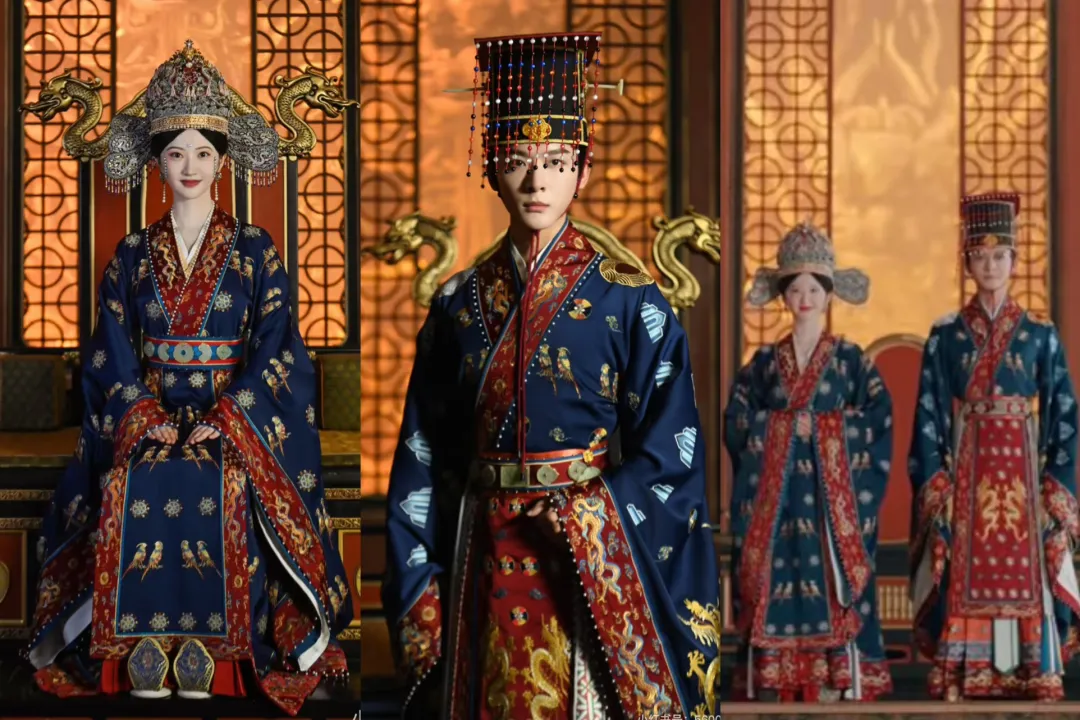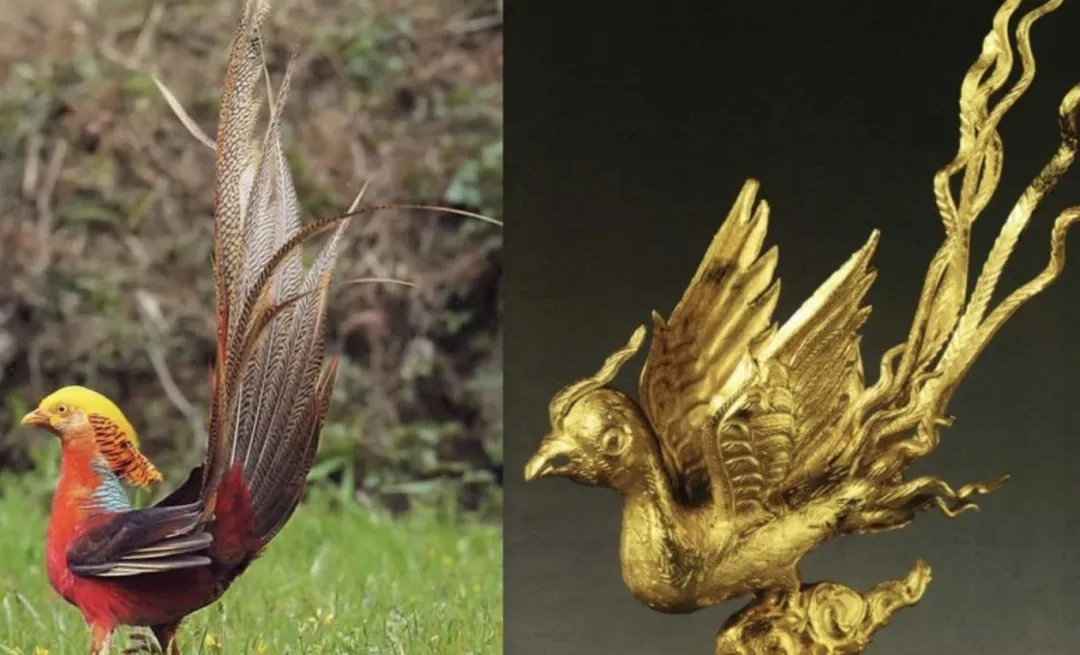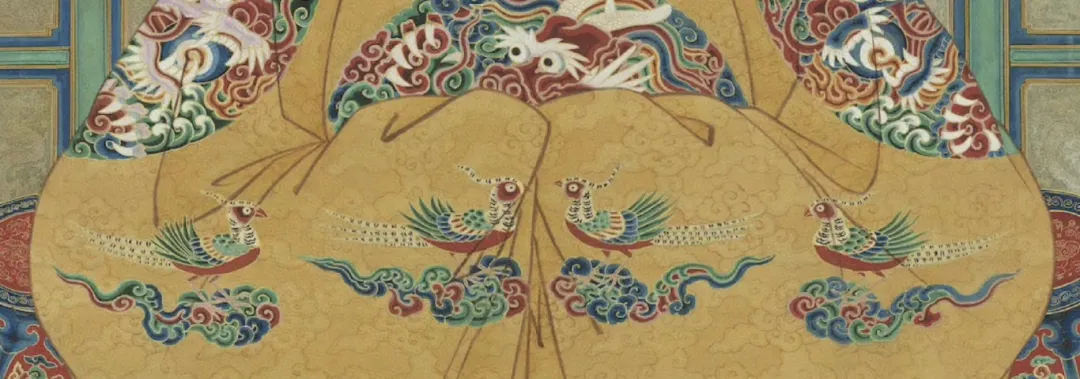Costume dramas need to pay more attention! In The Legend of Zhuohua, the ceremonial attire of Zhang Wanyi and Jing Tian as emperor and empress is confusing at first sight—almost like couple outfits. The much - praised imperial costumes are actually incorrect. By design, Jing Tian wears a Di Fu (翟服), and Zhang Wanyi wears a Mian Fu (冕服). Both have similar bird patterns, seemingly identical. Historically, the Di bird on the Di Fu and the Hua Chong (华虫) in the Twelve Ornaments of the Mian Fu were originally unrelated. Later, their designs merged, creating a beautiful 'mistake'—they look the same, and technically, they are. However, the emperor’s attire should be black (玄色), not dark blue.
Distinguishing the Birds
The Di (翟) is described in Shuowen Jiezi as a 'long - tailed pheasant,' referring to its feathers. In the avian hierarchy of Chinese motifs, if ranked, Hua Chong > Di > Phoenix, as the phoenix is usually considered highest, but Hua Chong and Di birds, for imperial attire, are often excluded from the general ranking. The Di is the highest - ranking motif for empresses and noblewomen.
Following Tang Dynasty customs, the Song Dynasty mandated Di birds on noblewomen’s attire, with the number indicating rank. The empress’s highest ceremonial dress was the Yi, dark blue with red Di patterns. High - ranking noblewomen's accessories also featured Di birds, reserved for high - status consorts or duchesses. The Di differs from the phoenix in tail design—flame - like for the phoenix, arrow - feather - like for the Di.
Hua Chong, part of the emperor’s Twelve Ornaments, is also called 'Bi' (鷩). Its exact form is unknown, but the golden pheasant is its prototype as it matches ancient descriptions. Kong Yingda noted that the pheasant’s five colors resemble floral brilliance, and Hua Chong symbolizes the emperor’s virtues. Its high status comes from representing the Five Colors (青, 赤, 黄, 白, 黑) and Five Virtues (仁, 礼, 信, 义, 智).
Before the Song Dynasty, Hua Chong and Di designs were distinct, but later both adopted the golden pheasant’s image. Ming emperors wore yellow round - collar robes with Twelve Ornaments, like Emperor Renzong’s portrait showing four Hua Chong on cuffs. Despite sharing an origin, Hua Chong and Di have unique symbolic roles in attire, and their names are not interchangeable. Note that emperors avoided dark blue, using black and reddish - yellow, while Ming princes used blue to distinguish rank. Empress attire also differed in color, likely altered for the drama. Don't be misled by TV shows.



